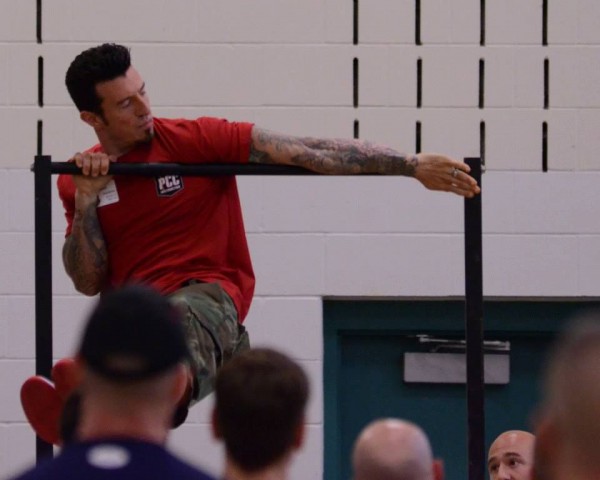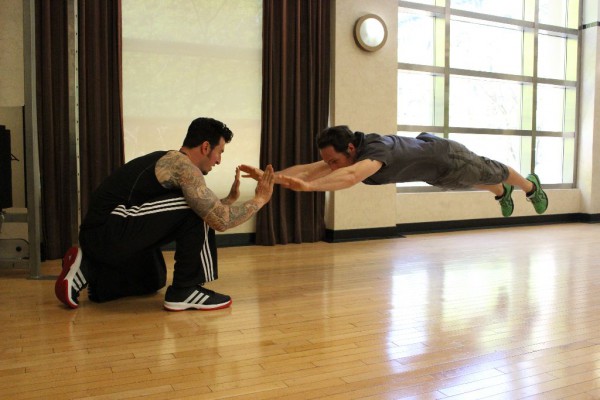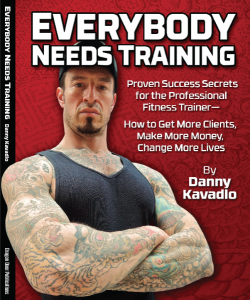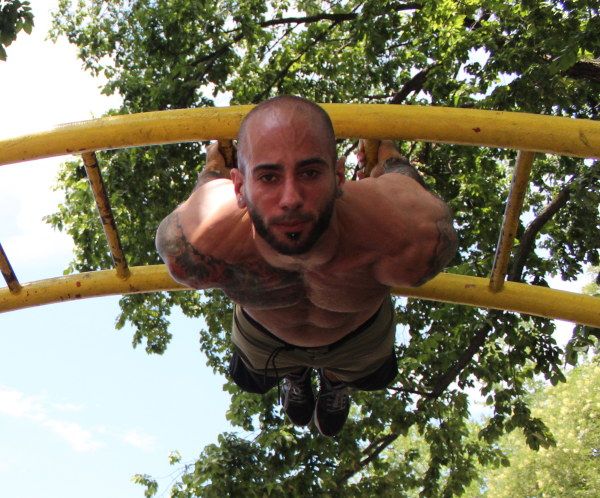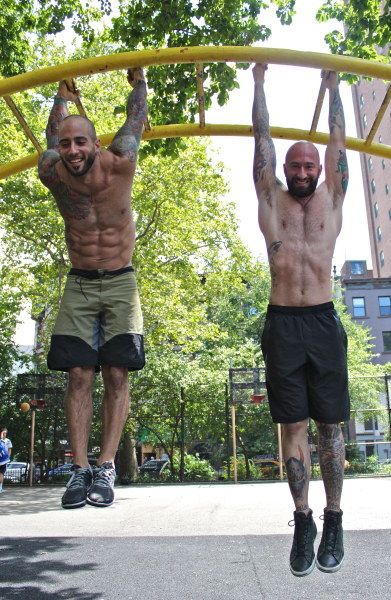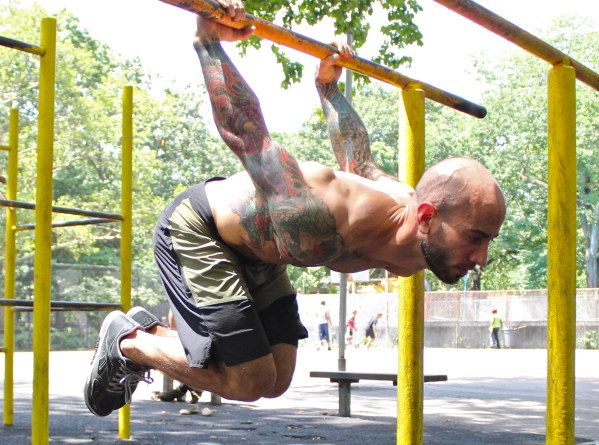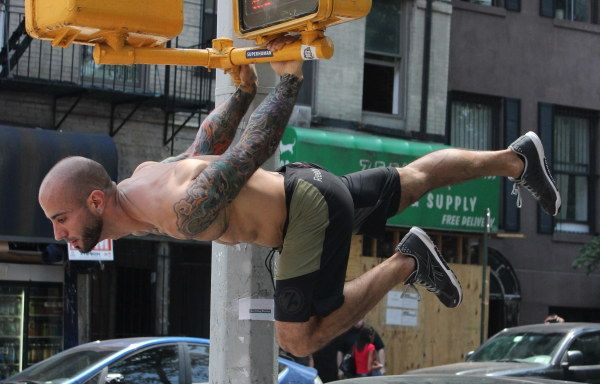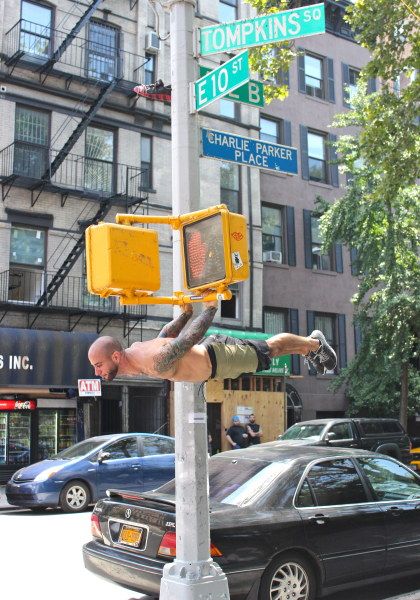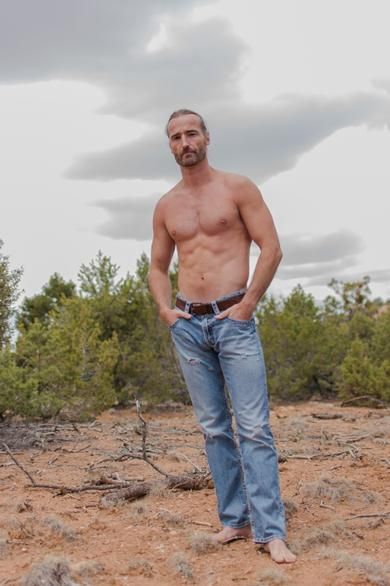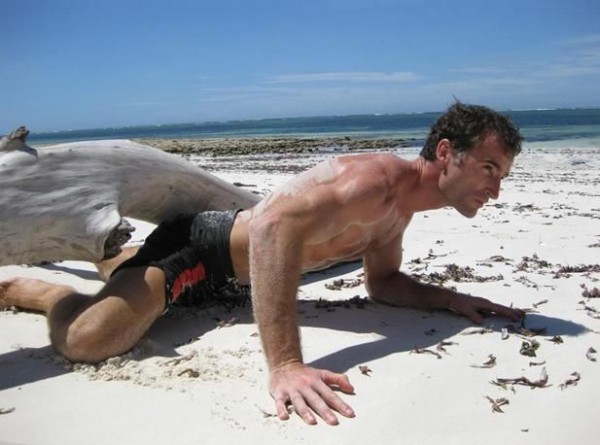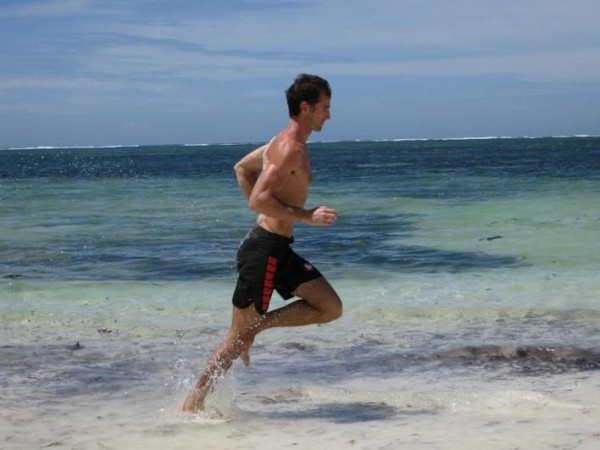As the sun rises at the start of the day, the world is illuminated. The grass warms up, the birds start singing, and the mind awakens. The time is now; that day is today.
The first Progressive Calisthenics Certification in June was a life-changing experience for many bodyweight training enthusiasts. I was honored to be part of such a spectacular event, to help others in their path toward excellence, and to celebrate physical culture in its purest form. So many strong and passionate people showed up, with such a vast body of knowledge that we all walked out smiling, with our collective heads spinning.
It was a thrill to break down, train, and explore progressions of pull-ups, squats, inversions, human flag, and much more. I witnessed some incredible breakthroughs and got asked some of the best exercise questions I’ve ever heard in my life. It is noteworthy to point out that in addition to the questions of form and physiology, I was often asked about the business of exercise. You see, many of the attendees were personal trainers, coaches, and instructors.
But before I can tell you that story, I have to tell you this story…
I love questions and I get asked a lot of them. Playwright Eugene Ionesco famously wrote “It is not the answer that enlightens, but the question.” In short: questions help everybody. Each day I receive emails asking me everything from dietary advice to the ever-popular, “What’s the trick for human flag?” [ANSWERS: Eat more fruits and veggies, less processed sugars and grains, and there are no tricks in fitness. That’s part of what makes it beautiful.] Again, I am frequently asked about the business. Trainers from all over the world contact me with questions about how to get a job, how to increase their client base, and, of course, how to get paid.
Professionals in other fields (which often have nothing to do with fitness) reach out to me as well. Oftentimes, they are considering switching careers and becoming personal trainers. Isn’t that how many of us got started? We loved fitness and wanted to help others achieve their goals!
According to the labor department, there are over 230,000 personal trainers working in the United States. That number grows, even as overall employment declines. Yet still, 80% of new trainers never make it past their first year. It’s no wonder: despite all the trainer schools, CPT certs, and personal training websites, I have never come across any literature that discussed how to actually make it as a trainer… in real life.
About a year ago, I sat down to write a book that addressed all of this. The world has been ready for this book—now the ebook is ready for this world (available this fall in paperback.) Brace yourself for:
Proven Success Secrets for the Professional Fitness Trainer
–How to Get More Clients, Make More Money, Change More Lives
You see, when I became a professional trainer, the coursework and academia did nothing to prepare me for reality. It was the knowledge and guidance of the other trainers, and of course, in time, my own experience that helped me go from a rookie, to a top gym trainer, to the fitness director in one of NY’s biggest and best health clubs. Eventually my path led to becoming an independent trainer/author/presenter. There were many roads and obstacles along the way, many stories to tell, which get covered in great detail in this book.
The reality of client acquisition, what most PT sessions are really like (as opposed to the squeaky-clean, hypothetical ones in the textbooks), and of course, how to handle the most difficult client questions, is the type of stuff we get our hands dirty with here. We talk about the differences between working for a gym, a studio, or yourself, and there’s a full chapter dedicated to my time tested secrets of personal training sales. There has never been a book like this before. Renowned lifter/author Dan John raves: “I don’t think I have ever seen this kind of depth in the field. It’s both obvious and ‘wow’ as you read it. Amazing stuff. It fills a gap in the community that, frankly, surprises me no one has really filled.”
Wow indeed.
Back to the first story…
You see, like the road toward smoothly executing advanced pull-ups, the path to being a successful trainer requires plenty of time and energy. There is no substitute for a thousand hours of practice and years of experience, for which no book, not even mine, can ever be a replacement… But it sure can help! Just remember, success in both calisthenics and personal training (and almost everything, for that matter) is based on hours and effort. Work hard; train hard!
Speaking of training hard, a new group will gather next week for the second ever PCC. I couldn’t be happier. It is an honor to be a co-presenter and I’m looking forward to meeting everyone who attends. It’s always a pleasure connecting with like-minded individuals who share my passion.
It is the dawn of a new day. Let’s get to it!
***
About Danny Kavadlo: Danny Kavadlo, Master PCC, CPT is a Personal Trainer in New York City. He’s worked with hundreds of clients, including athletes, models, and celebrities. He has been featured in the New York Times, Convict Conditioning & Men’s Fitness. His first full-length book Everybody Needs Training is now available on e-book through Dragon Door. Learn more about Danny at: www.DannyTheTrainer.com.
